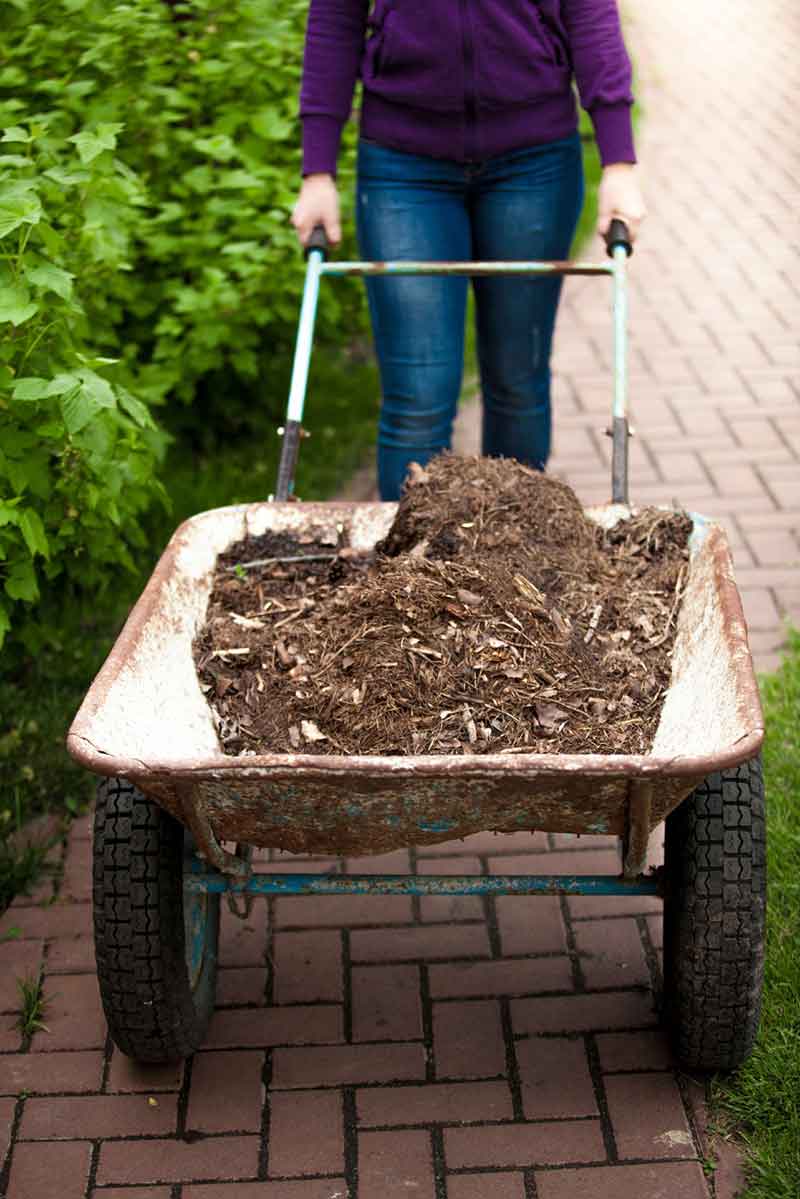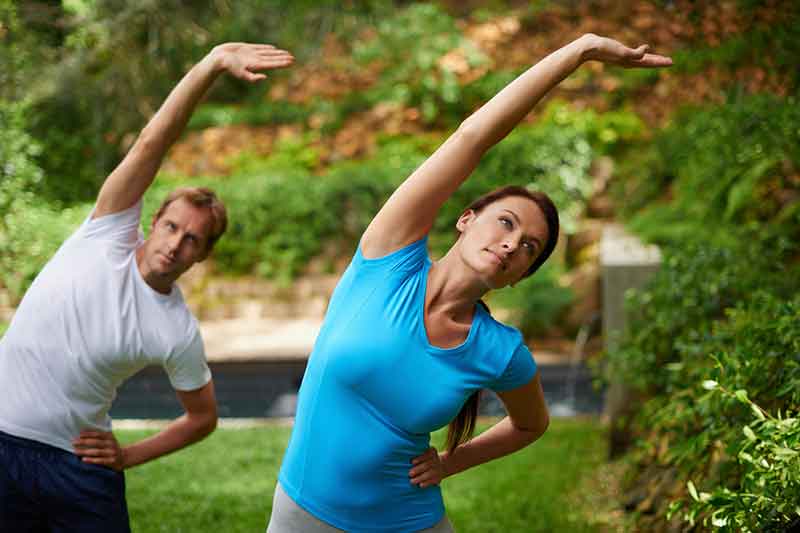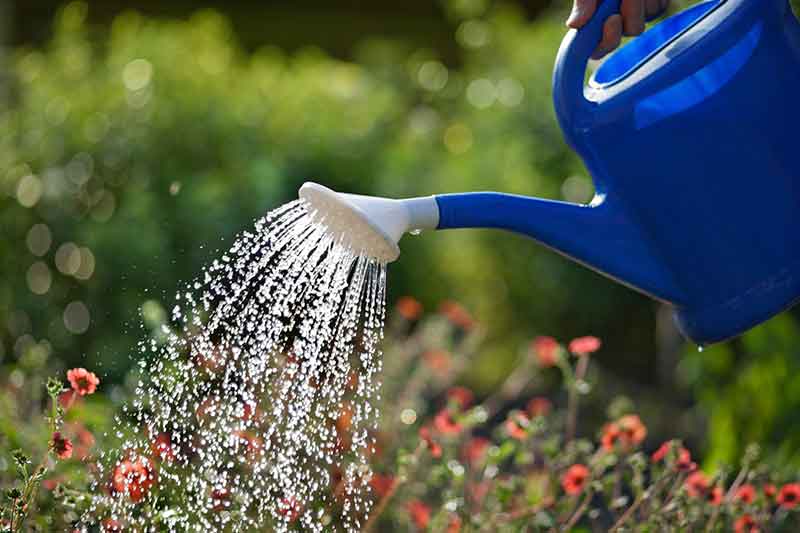How to Add Gardening to Your Exercise Program
Gardening may not come to mind when you think of an aerobic workout, but it should. Research shows that regular doses of common gardening tasks can deliver health benefits comparable to traditional exercise programs. Done with purpose, garden work delivers substantial aerobic and cardiovascular benefits, so give your dirt its due. In the garden — unlike your favorite fitness center — there aren't any membership fees.
Understanding Benefits and Baselines
Federal guidelines advise that just 150 minutes per week of moderately intense aerobic exercise significantly improves health across all age groups and all races. That's just two hours and 30 minutes per week or 30 minutes every weekday, but that baseline activity can be broken down even further. As long as activity lasts at least 10 minutes per session — enough to quicken breathing and get your heart pumping — you're on your way to that weekly aerobic goal. Add resistance training and muscle-strengthening twice a week — easily accomplished by pushing a wheelbarrow or hefting mulch — and that cardio requirement is covered, too.1
By meeting these simple recommendations each week, gardening makes a substantial difference in current and future health. Common gardening tasks can lower the risk of high cholesterol, high blood pressure, coronary heart disease, stroke, Type 2 diabetes, obesity, osteoporosis and depression. It also increases flexibility, strengthens joints, reduces stress, improves sleep and lowers the risk of premature death.1,2 Not bad for an activity that serves up tasty edibles and beautiful blooms.

Seeing How Gardening Measures Up
You may wonder how “moderately intense" activity translates to garden work. Harvard Medical School reports that gardening tasks are on par with other common exercise activites.3 In a simple 30-minute gardening session, the calorie expenditures for a 155-pound person stand up well to comparable time spent on other activities, as these examples show:
- Planting seedlings or raking your lawn burns 149 calories in 30 minutes. That's the same as water aerobics or Hatha yoga.
- Weeding for 30 minutes — easy to do in many gardens — burns 172 calories. That's more than you'll expend with moderate calisthenics.
- Digging and spading garden soil burn 186 calories per one-half hour. That matches skateboarding or playing softball. Plus, it combines weightlifting with aerobics.
- Mowing with a push lawn mower burns 205 calories in 30 minutes. That equals low-impact aerobics or golf — carrying your own clubs. Incidentally, it's more than four times what you'll burn behind a computer.3
The more time you spend on garden workouts or the more vigorously you garden, the faster and farther the benefits accrue. At higher activity levels, gardening and comparable exercise can reduce risks of colon and breast cancer, and other diseases.1,2

Getting the Most From Your Tasks
Because gardening's purpose transcends exercise alone, it can be easier to stick with the program. Having living things depend on you can be a powerful motivator, as can dreams of homegrown goodies and flowers. To optimize the health benefits of your labors, it's important to treat gardening like the workout it really is.
If you're out of practice and out of shape, talk with your doctor before you start. Begin slowly, and gradually build endurance as you would with other exercise plans. Even 60 minutes a week delivers some benefits.1 Start your sessions with stretching exercises to warm up muscles before diving in. This is especially important in spring, when a winter spent indoors might spur you to overdo.

Spread your weekly workouts across at least three days, if possible, to reduce the chance of fatigue and injuries. Vary your movements, so you don't overwork any one muscle group, and be thoughtful and purposeful in each task. Just think — a full, 2-gallon watering can weighs more than 16 pounds, not including the can. Switch the hand you carry with, and don't strain joints. Lift up slightly, and work biceps and shoulders instead. Like in the gym, one set of eight to 12 repetitions is all it takes, and two or three sets are even better.1 Of course, don't forget to wear gloves, a hat and sunscreen for protection. Take plenty of breaks, and keep up the fluids!
Stacking Up the Benefits Later in Life
Once gardening gets in your blood, chances are it's there to stay. Studies show that benefits continue as gardeners mature, and it's never too late to start. For the elderly, gardening activities increase hand strength and pinch force, as well as self-esteem.4 Improved balance and stronger muscles reduce the risk of falls, and gardening may lower risks of dementia, too. In one study, daily gardening was associated with a 36 percent decrease in dementia for men and women. In comparison, walking had a similar impact, but only for men.5

In general, gardeners eat more fruits and vegetables than non-gardeners. The elderly chronically under-consume these necessary foods. However, even those who take up gardening late in life increase their veggie intakes. Just three months of gardening improves elderly eating habits, so mature gardeners enjoy the benefits of a healthier diet.6
Whether you garden for peace of mind or bountiful produce, your garden has more to give. Hit the garden, hit the gym, or hit them both, and watch health benefits add up fast. Whatever your goals and your starting point, GardenTech® brands are here to help you enjoy gardening's many benefits and live a healthy life to the fullest.
GardenTech is a registered trademark of Gulfstream Home and Garden, Inc.
Sources:
1. Office of Disease Prevention and Health Promotion, “Physical Activity Guidelines: Active Adults," U.S. Department of Health and Human Services, February 2016.
2. Center for Disease Control and Prevention, “Physical Activity and Health: the Benefits of Physical Activity," U.S. Department of Health and Human Services, June 2015.
3. Harvard Health Publications, “Calories Burned in 30 Minutes for People of Three Different Weights," Harvard Medical School, January 2016.
4. Park, Sin-Ae, Shoemaker, Candice A. and Haub, Mark D., “Physical and Psychological Health Conditions of Older Adults Classified as Gardeners or Nongardeners," HortScience, February 2009.
5. Simons, LA, Simons, J., McCallum, J and Friedlander, Y., “Lifestyle Factors and Risk of Dementia: Dubbo Study of the Elderly," U.S. National Library of Medicine, national Institutes of Health. January 2006.
6. Sommerfeld, Aime J., McFarland Amy L., Waliczek, Tina M. and Zajicek, Jayne M.,“Growing Minds: Evaluating the Relationship between Gardening and Fruit and Vegetable Consumption in Older Adults," HortTechnology, august 2010.
Get Monthly Gardening Advice!





